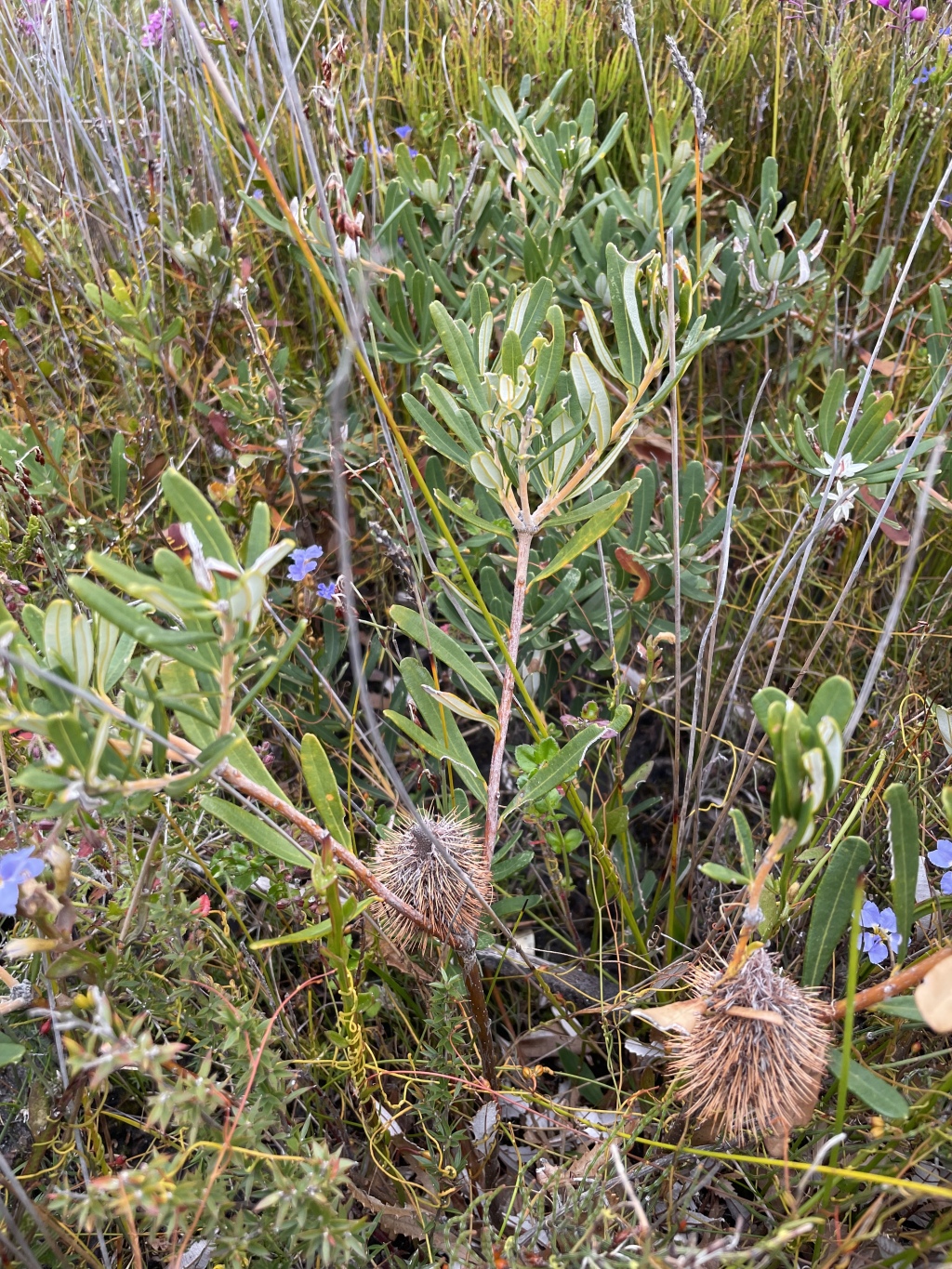Banksia croajingolensis
Molyneux & ForresterSuckering shrub to 1.2 m high; lignotuber present; bark thin; branchlets glabrous, sometimes sparsely white or rusty pubescent when young. Leaves often whorled, narrowly obovate, 1.6–6 cm long, 5–17 mm wide, discolorous, upper surface dark green, glossy, lower surface white-tomentose, midrib and secondary venation usually glabrous or only lightly pubescent; margins entire or with a few short teeth, flat or slightly curved; apex apiculate or emarginate; petiole 2–4 mm long. Inflorescence 7–14 cm long, 4–5.5 cm wide at anthesis. Tepals 15–18 mm long, yellow, pubescent, persistent. Follicles few–many, 13–19 mm long, becoming glabrous, usually opening when mature. Body of seed more or less cuneate, 8–10 mm long, wing to c. 20 mm long. Flowers Jun.–Aug.
EGL. Known from a single population near Mallacoota, occurs in a drainage line in coastal heath.
Possibly a hybrid involving Banksia integrifolia and B. marginata. Also closely resembles B. paludosa which occurs nearby in south eastern New South Wales. Known to hybridise with B. integrifolia (Molyneux & Forrester 2007).
 Spinning
SpinningSynonyms
Molyneux, W.M.; Forrester, S.G. (2007). Banksia croajingolensis (Proteaceae) a new species from East Gippsland, Victoria.. Telopea 11: 419–426.
